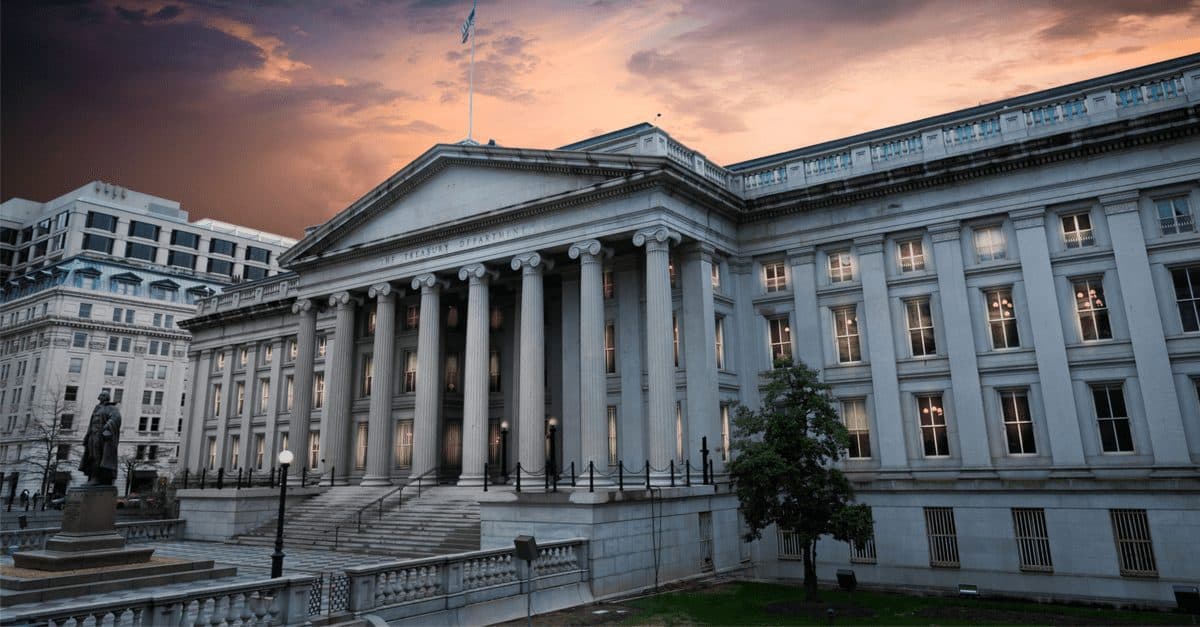Fidelity Report: Crypto Regulation Will Be Required in 2022
“Regulation and product access work hand in hand and we are hopeful that 2022 can bring about more clarity than prior years,” Fidelity Digital Assets’ Director of Research Chris Kuiper and Research Analyst Jack Neureuter said in a report

Treasury Building in Washington, DC; Source: Shutterstock
- Last year there were lots of conversations surrounding crypto regulation and in the final months of 2021, US policymakers sent signals that greater oversight of this asset class is imperative
- The combination of proper regulation and financial firms working to offer investors access to digital assets will likely increase overall adoption of this financial sector, they said
As crypto native firms continue to innovate and grow the industry, new regulation will “certainly be required,” Fidelity Digital Assets’ Director of Research Chris Kuiper and Research Analyst Jack Neureuter said in a report.
“Regulation and product access work hand in hand and we are hopeful that 2022 can bring about more clarity than prior years as we feel this is key to bringing a greater portion of the hundreds of trillions in traditional assets into the digital asset ecosystem,” they said.
In the final months of 2021, US policymakers sent signals that greater oversight of this asset class is imperative.
Even as regulation loomed over the industry, retail and institutional investors’ adoption increased dramatically. The total market capitalization for cryptocurrencies is $2 trillion, up over 110% from the year-ago date, data on CoinMarketCap shows. At its peak, the total cryptocurrency market cap was almost $3 trillion on Nov. 9, 2021.
“While its growth rate has been impressive, it is still relatively small compared to the hundreds of trillions of dollars in assets globally,” they wrote.
As the digital asset ecosystem expanded and in 2021, Kuiper and Neureuter expect institutional interest in DeFi to continue to grow this year.
The combination of proper regulation and financial firms working to offer investors access to digital assets will likely increase overall adoption, they said. “The key to allowing traditional allocators to continue to pour capital into the digital asset ecosystem revolves around regulatory clarity and accessibility,” Kuiper and Neureuter added.
“Overall, we would say 2021 was a year that further confirmed digital assets have arrived and are here to stay,” they said.
Get the news in your inbox. Explore Blockworks newsletters:
- The Breakdown: Decoding crypto and the markets. Daily.
- 0xResearch: Alpha in your inbox. Think like an analyst.






